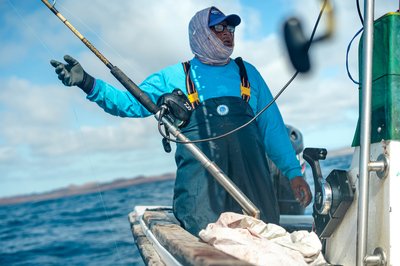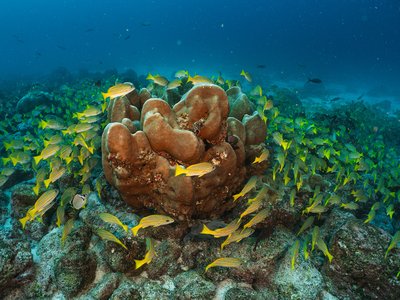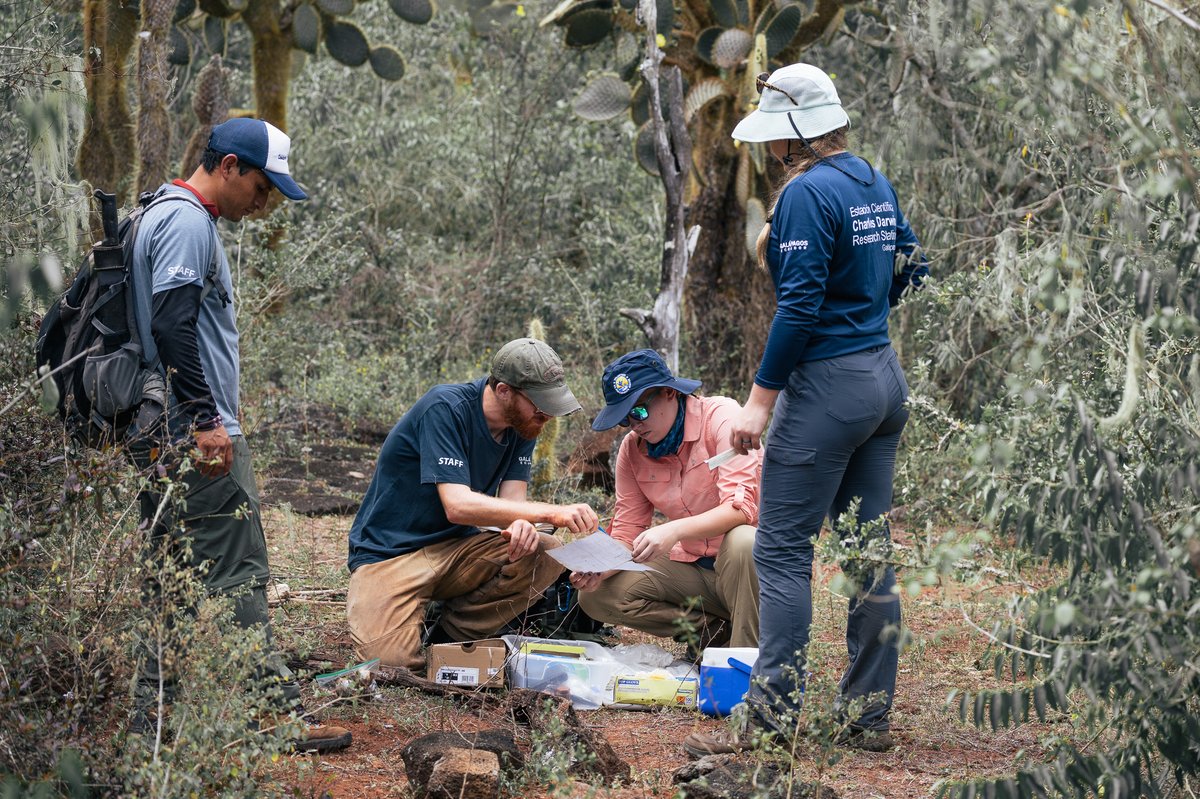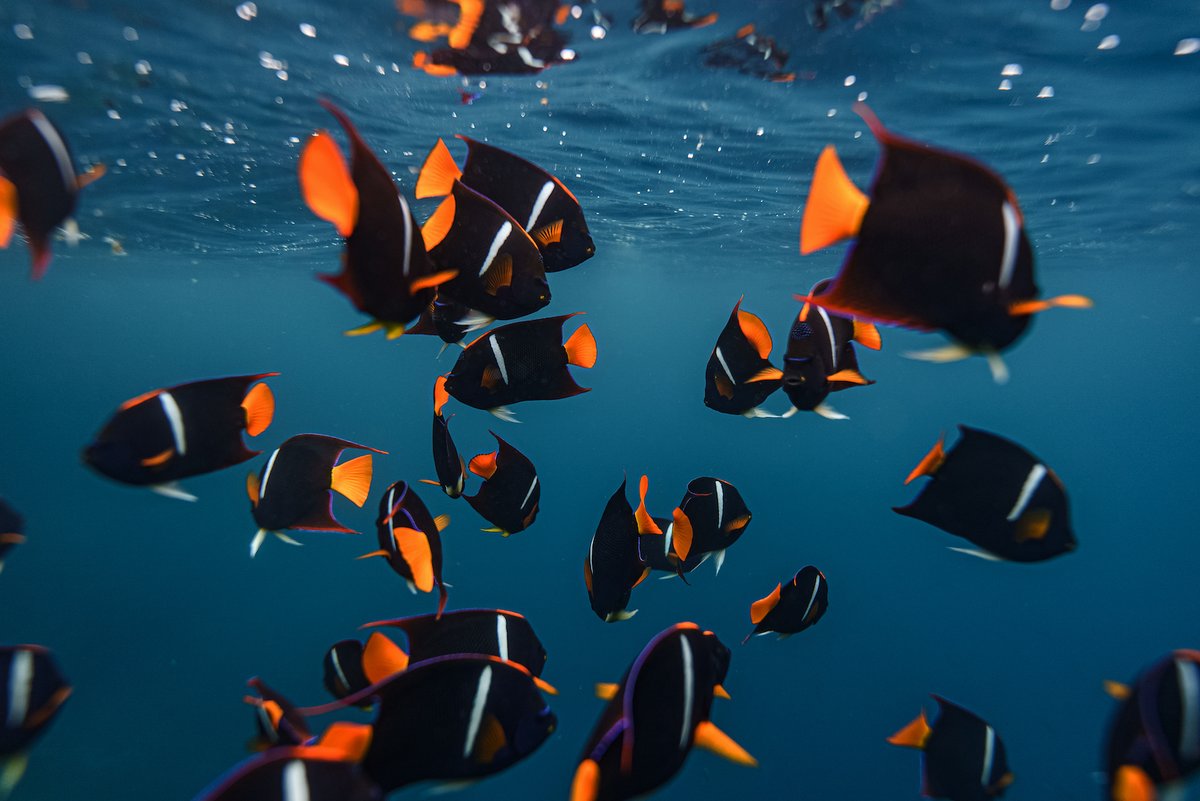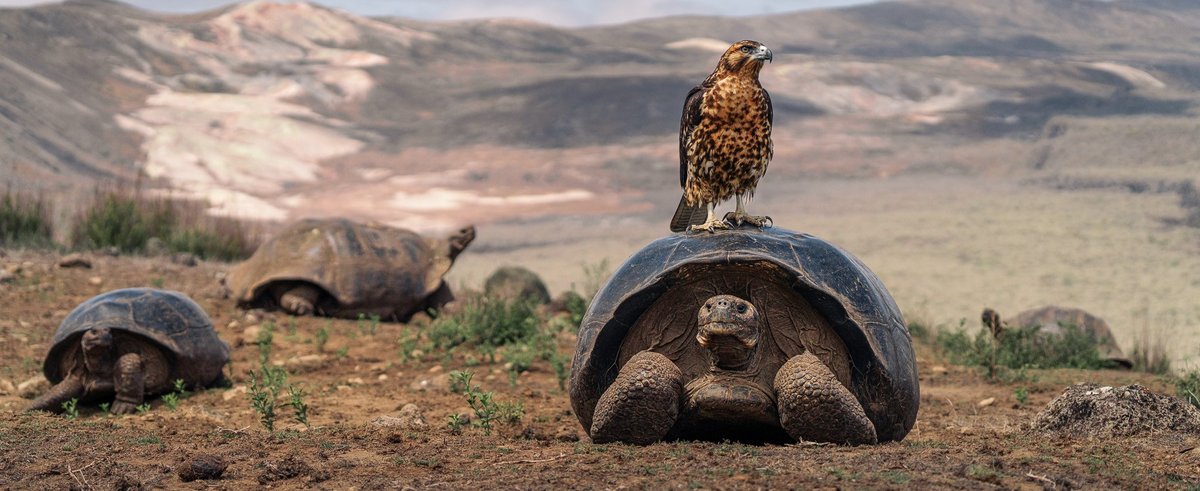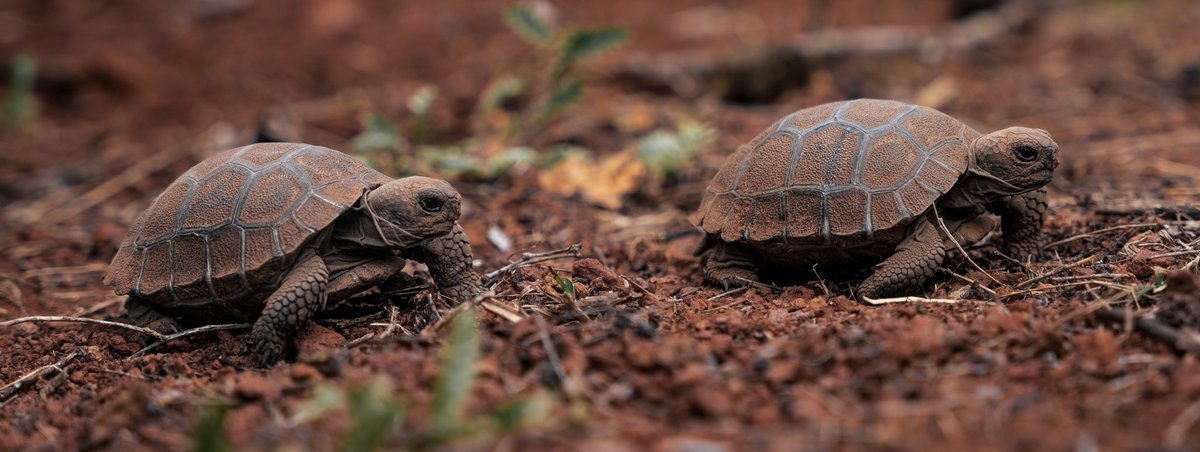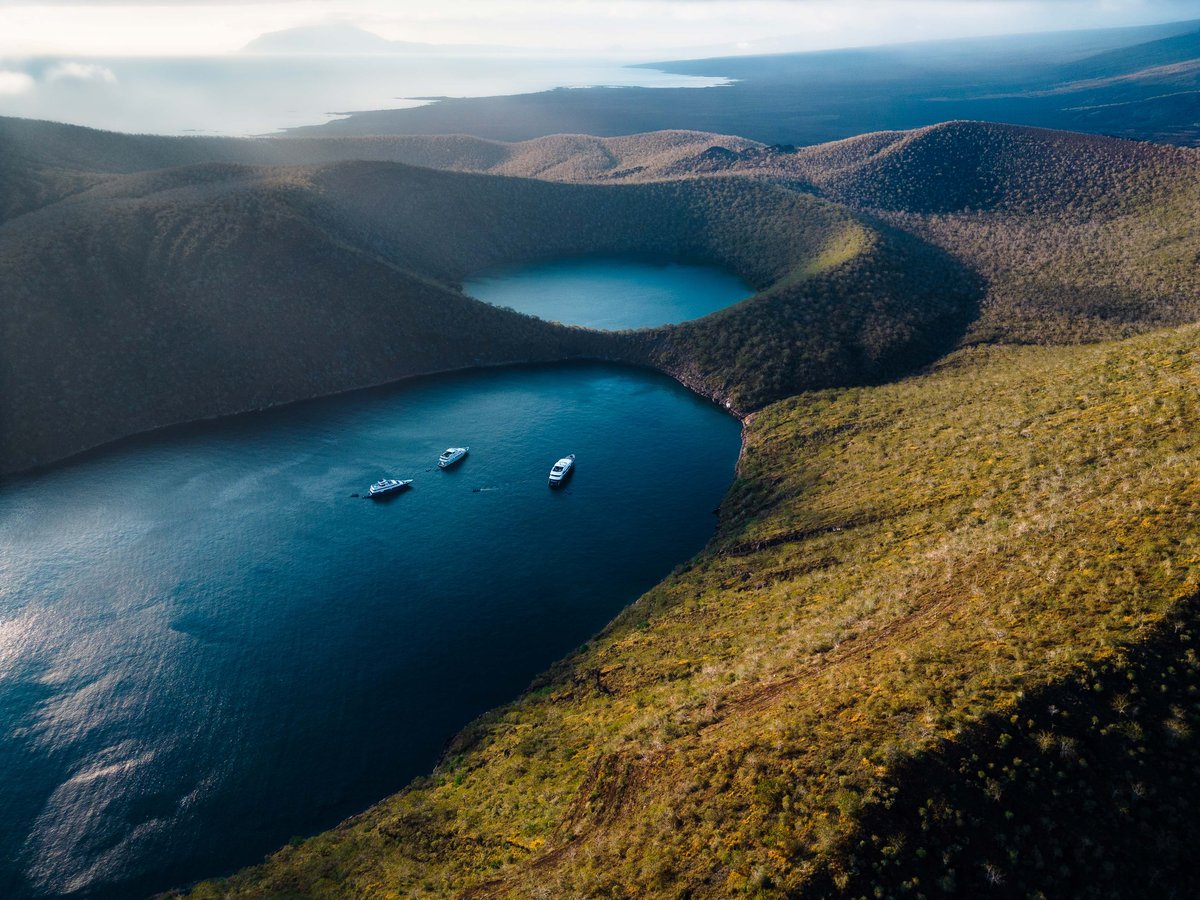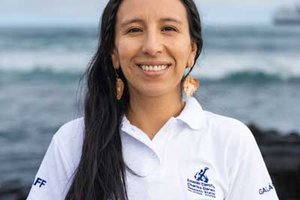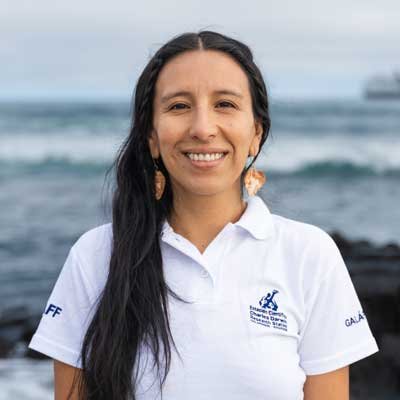A Historic Alliance that Continues to Inspire Global Conservation
In 1959, the International Union for Conservation of Nature (IUCN) supported the creation of the Charles Darwin Foundation (CDF). Since then, CDF’s membership in the Union has been key to guiding and focusing actions within diverse initiatives that drive scientific research and conservation of Galápagos’ terrestrial, marine, and coastal ecosystems, as well as to deepening understanding of the socio-ecological systems that coexist in the archipelago.
More than six decades later, this alliance remains strong and relevant. This October, the CDF, exercising its role as a Member, took part in the IUCN World Conservation Congress held in Abu Dhabi, United Arab Emirates, one of the most important global events on conservation. Represented by our Director of Science, Dr. María José Barragán P., the CDF joined this global gathering that brought together governments (national and subnational), Indigenous communities, scientists, civil society organizations, and youth representatives to discuss viable alternatives and solutions to the planet’s most urgent crises: biodiversity loss, climate change, pollution, and desertification, among others.
A space for action, decision-making, sharing challenges, and science-based knowledge
With 77 years of history, the IUCN brings together more than 19,000 experts and over 1,400 member organizations, all committed to seeking alternatives for a sustainable future. Within this framework, CDF’s participation fulfilled the mandate of the Union’s members and contributed to advancing its mission. It also provided an opportunity to strengthen institutional alliances, connect with donors, agencies, and organizations interested in contributing to island and ocean conservation, and share lessons and knowledge generated from Galápagos and the Eastern Tropical Pacific.
The first days of the Congress served as a window to highlight the most relevant and pressing issues on the IUCN’s agenda. These sessions were spaces to hear experiences, successes, and lessons learned in response to global challenges that also threaten Galápagos: climate change, habitat loss, biological invasions, human wildlife conflicts, and illegal fishing. They also showcased solutions to address these challenges, such as sustainable investments, nature-based solutions, green lists, and education. Topics like ecosystem resilience, conservation technology, and regenerative economies took center stage in the debates.
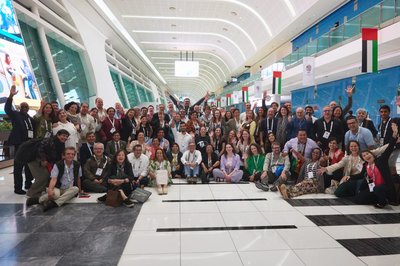
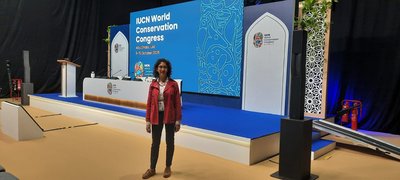
Decisions that shape the course of conservation
The second part of the Congress was dedicated to the IUCN General Assembly, a space where the Union’s Strategic Plan for the next twenty years was voted on an instrument that will define IUCN’s global conservation priorities for the years ahead.
In this democratic process, more than 140 motions were voted on, covering a wide range of topics and proposed by IUCN members. In these sessions, the CDF exercised its vote as a Member, reaffirming its commitment to the conservation and protection of terrestrial and marine systems, as well as to the well-being of Galápagos’ local human communities all grounded in the principle of sustainability.
Among the motions supported by the CDF, several align directly with its institutional mission:
- Motion 002: Promote sustainable and nature-positive food systems.
- Motion 009: Protect biomes and ecosystems threatened by the conversion of native vegetation.
- Motion 056: Promote an ethical relationship with the oceans, recognizing their intrinsic value.
- Motion 071: Declare a Decade of Island Resilience to strengthen adaptation to climate change.
- Motion 032: Protect seamounts and vulnerable marine ecosystems from destructive practices.
- Motion 037: Take urgent action in response to the fourth global coral bleaching event.
- Motion 117: Strengthen prevention of invasive exotic forest pests.
- Motion 118: Conserve the scalloped hammerhead shark (Sphyrna lewini) and other threatened species.
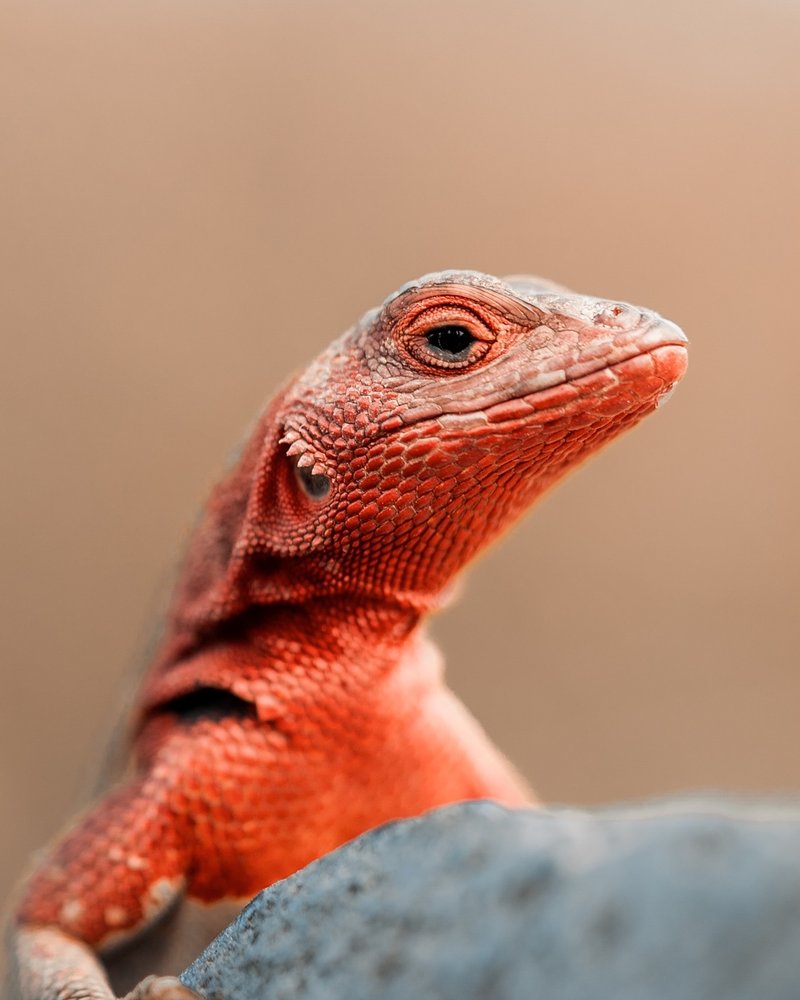
Building the Future Through Science and Cooperation
CDF’s participation in this global forum allowed it to share more than six decades of accumulated experience, reflect on future challenges, and envision new opportunities for collaboration.
“Science has the power to guide policy, inspire collaboration, and mobilize society toward a more sustainable future,” said Dr. María José Barragán, CDF Director of Science.
The event also opened new opportunities for collaboration with institutions and regions where the CDF has not yet established initiatives, such as the United Arab Emirates, further strengthening its global network for action.
Although political and geopolitical issues were not part of the formal agenda, the Congress offered an invaluable opportunity to highlight realities, build networks, and enrich the CDF’s scientific agenda with inspiring and replicable experiences.
As environmental challenges grow, the alliance between the Charles Darwin Foundation and the IUCN demonstrates that international cooperation and applied science remain the most powerful tools to conserve biodiversity and ensure balance between human well-being and the planet’s health.
